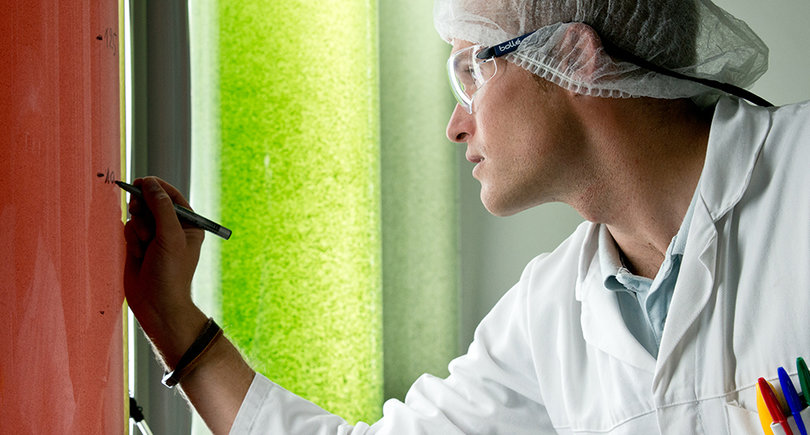Macroalgae Cells Culture
A sustainable marine technology
Macroalgae are traditionally used in many fields including nutrition and beauty care as they contain metabolites that are biologically active compounds.
Innovative Cells Culture Process & Biodiversity Preservation
By growing macroalgae cells in laboratory, BiotechMarine can offer active ingredients from a wide variety of macroalgae which are rare in nature.
This technology consists in selecting macroalgal cells from a single drop of marine water, or from colonized shells, rocks, animals or other algae and keeping them at the cell state during all the process. This requires isolation work to obtain monospecific cultures. Cells are then cultivated in photobioreactors going through a scale up process in order to produce biomass at industrial scale. Culture conditions such as salinity, nature of nutrients, mixing, gas introduction, temperature, etc., are key parameters to reach optimal biomass productivity.
Only a few macroalgae are of an economic interest whereas it is estimated that 9,000 species of macroalgae exist at world scale, including 1,800 brown macroalgae, 6,000 red macroalgae and 1,200 green macroalgae. We estimate that less than 1% are valorized in cosmetics. This level of exploitation is due to the low accessibility of the biomass, some species being not abundant and rarely cultivable.
BiotechMarine, a subsidiary of SEPPIC, chose to focus its attention on the rare and poorly known species, and designed the world's first technology to cultivate macroalgae cells and propose new active ingredients for beauty care.
Related page
Proprietary CELEBRITY™ Biotechnology
The technology is called “CELEBRITY™” with reference to “Cell” and its original “Brittany” roots.
Bréhat archipelago is a hot spot of biodiversity that contains thousands of species. With this unlimited potential in mind, macroalgae cells culture technology opens the possibility to create a bank of macroalgae cells from many species whose compositions and effects on skin have yet to be explored.
